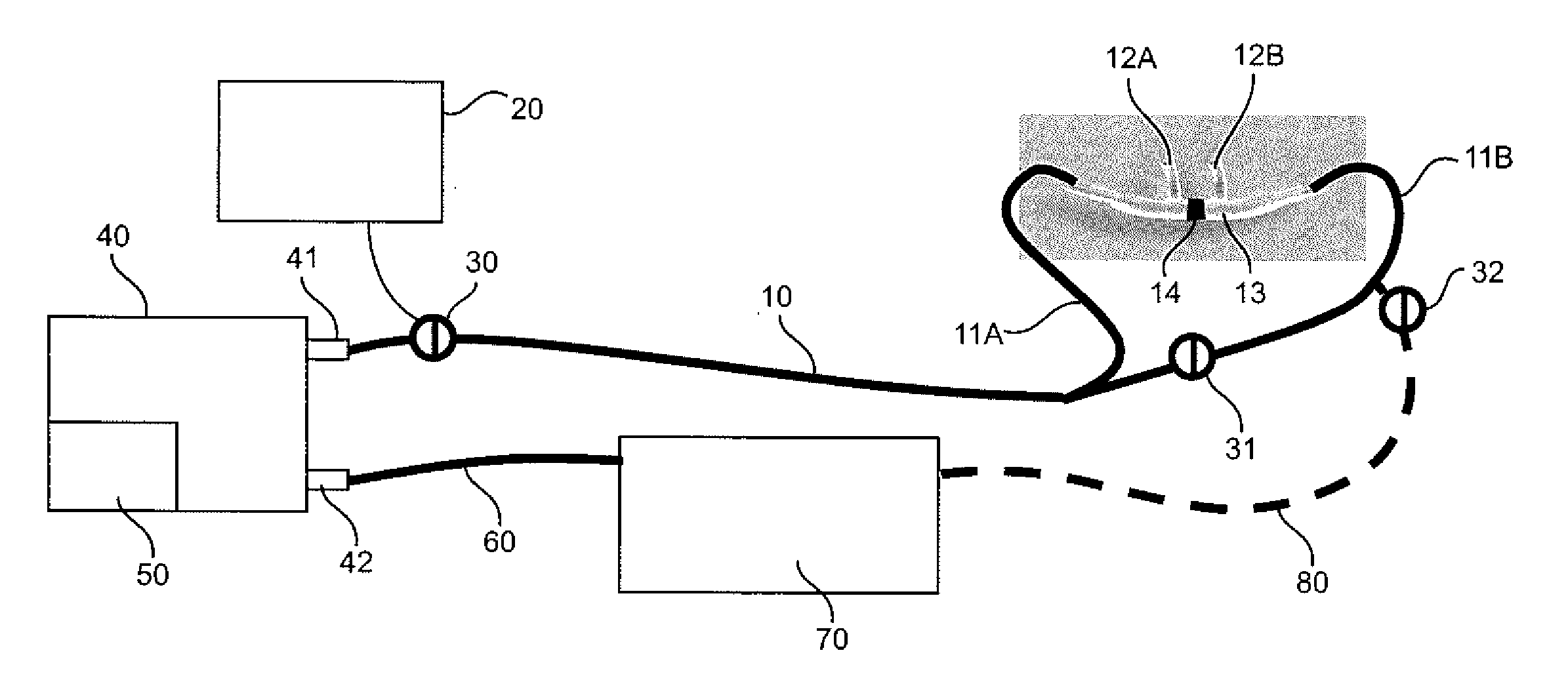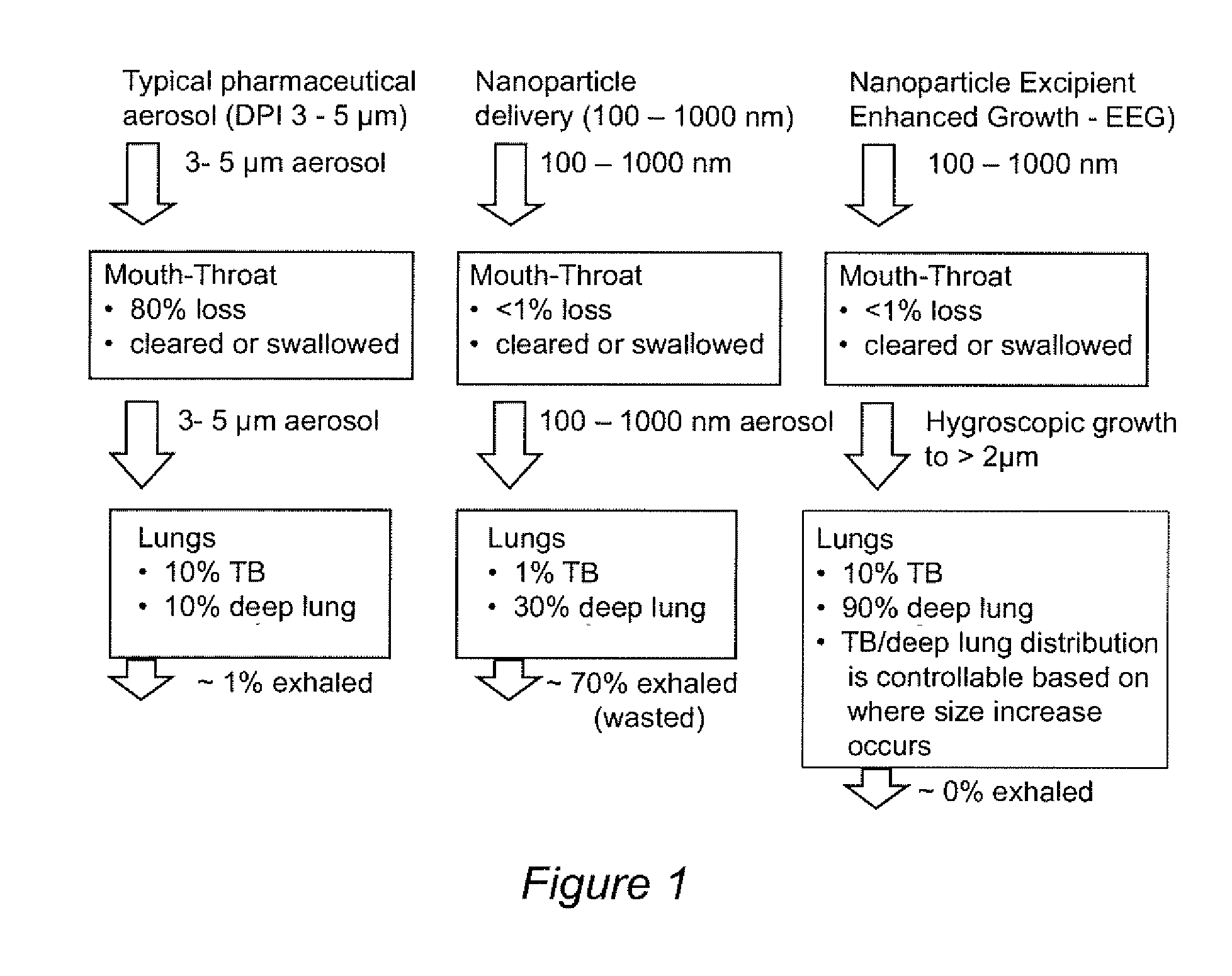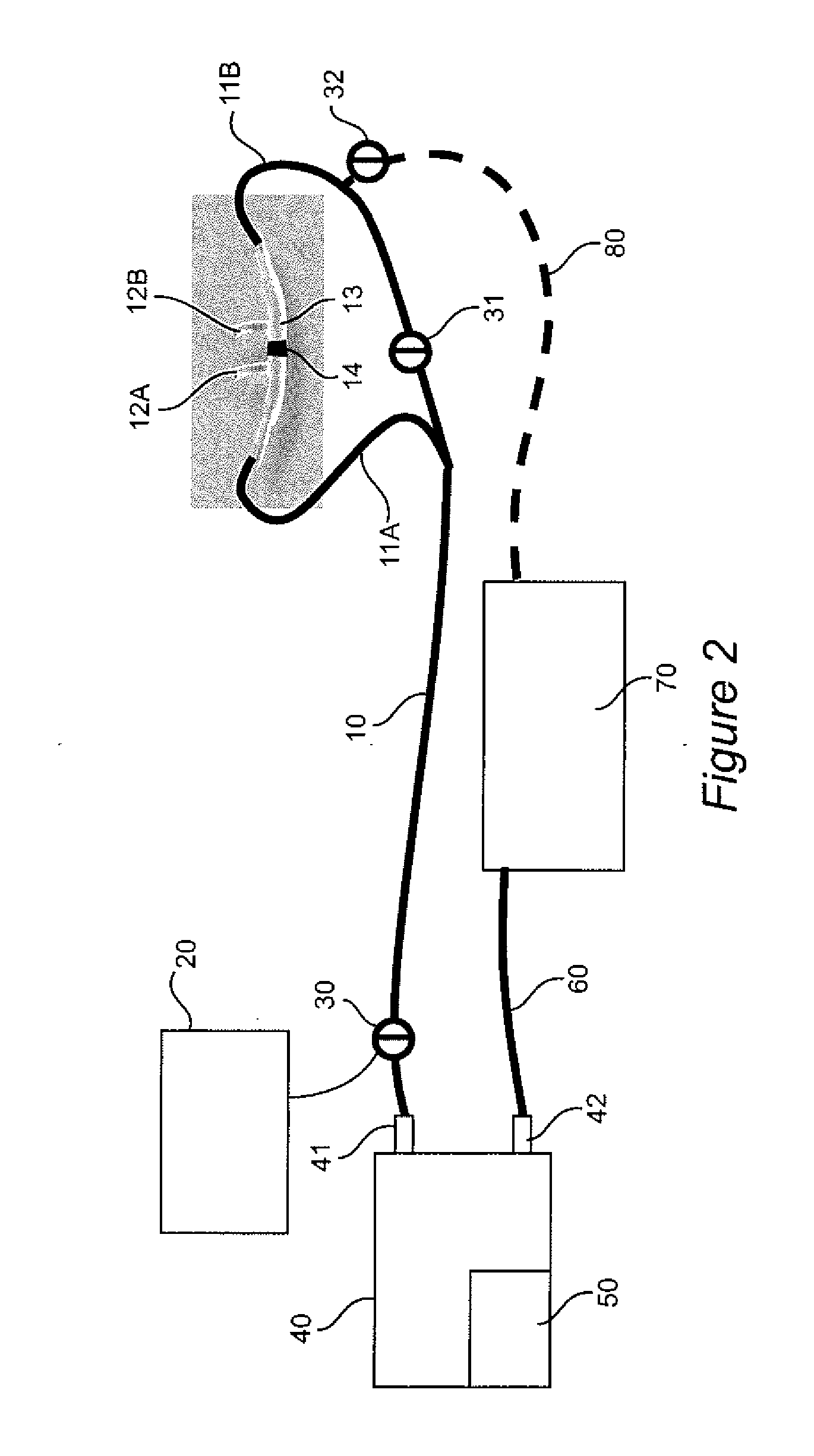Delivery of Submicrometer and Nanometer Aerosols to the Lungs Using Hygroscopic Excipients or Dual Stream Nasal Delivery
a technology of aerosols and excipients, applied in the direction of aerosol delivery, dispersed delivery, peptide/protein ingredients, etc., can solve the problems of insufficient increase to significantly increase lung retention, significant fraction of prior art drug particles exhaled, medication waste, etc., to facilitate particle/droplet growth, increase lung retention, and enhance excipient growth
Active Publication Date: 2012-10-04
VIRGINIA COMMONWEALTH UNIV
View PDF2 Cites 23 Cited by
- Summary
- Abstract
- Description
- Claims
- Application Information
AI Technical Summary
Benefits of technology
The present invention provides a method for delivering aerosolized therapeutic agents to the lungs using a nasal route. The invention involves delivering a first gaseous carrier containing submicrometer aerosolized drug particles and a second gaseous carrier with higher water vapor content. When the two carriers meet in the nasopharynx area, moisture in the second stream mixes with the submicrometer particles, causing them to increase in size and weight as they travel through the airways and into the lungs. This results in a higher percentage of the aerosolized agent reaching the intended destination (the lungs) and a more consistent amount of drug being delivered between administrations. The rate and extent of aerosol particle size growth can be controlled by the water vapor content of the second air stream, to target deposition sites for the aerosol particles within the airways. The invention also combines the EEG particles / droplets with the dual stream nasal delivery technology.
Problems solved by technology
While prior art nanoparticles may exhibit some size increase upon exposure to the in vivo relative humidity of the lungs (˜99.5%), the increase is insufficient to significantly increase lung retention.
Therefore, a significant fraction of prior art drug particles are exhaled, and the medication is wasted.
Method used
the structure of the environmentally friendly knitted fabric provided by the present invention; figure 2 Flow chart of the yarn wrapping machine for environmentally friendly knitted fabrics and storage devices; image 3 Is the parameter map of the yarn covering machine
View moreImage
Smart Image Click on the blue labels to locate them in the text.
Smart ImageViewing Examples
Examples
Experimental program
Comparison scheme
Effect test
examples
[0069]These Examples describe experimental data as follows:
examples 1-3
, the use of a hygroscopic excipient to promote lung deposition of aerosols;
examples 4-7
, the dual delivery stream technology.
the structure of the environmentally friendly knitted fabric provided by the present invention; figure 2 Flow chart of the yarn wrapping machine for environmentally friendly knitted fabrics and storage devices; image 3 Is the parameter map of the yarn covering machine
Login to View More PUM
| Property | Measurement | Unit |
|---|---|---|
| size | aaaaa | aaaaa |
| size | aaaaa | aaaaa |
| size | aaaaa | aaaaa |
Login to View More
Abstract
Pharmaceutically engineered aerosols (e.g. submicrometer and nano-particles and droplets) containing a hygroscopic growth excipient or agent are employed to improve the delivery of respiratory aerosols to the lung. Inclusion of the hygroscopic agent results in near zero depositional loss in the nose-mouth-throat regions and near 100% deposition of the aerosol in the lung. Targeting of the aerosol to specific lung depths is also possible. In addition, methods and apparatuses for delivering aerosols to the lung are provided. The aerosol is delivered to one nostril of a patient while a relatively high humidity gaseous carrier is delivered to the other nostril, resulting in post-nasopharyngeal growth of the aerosol to a size that promotes deposition in the lung.
Description
BACKGROUND OF THE INVENTION[0001]1. Field of the Invention[0002]The invention generally relates to improved lung deposition of aerosols. In particular, in one embodiment, the invention provides aerosol formulations which are pharmaceutically engineered and formulated to contain hygroscopic excipients, and in another embodiment or a variation of the first embodiments, provides methods, apparatuses and systems for improved delivery of aerosols to the lungs using dual stream nasal delivery.[0003]2. Background of the Invention[0004]Nanoparticle aerosol drug delivery presents an advantageous route of administration for both locally and systemically acting pharmaceuticals. Inhaled nanoparticles in the size range of 40-1000 nm are capable of efficiently penetrating the mouth-throat (MT), nasal, and tracheobronchial (TB) regions of the lungs. Indeed, this nanoparticle size is optimum for transport into the peripheral lung regions, including the alveoli. However, once in the deep lung region...
Claims
the structure of the environmentally friendly knitted fabric provided by the present invention; figure 2 Flow chart of the yarn wrapping machine for environmentally friendly knitted fabrics and storage devices; image 3 Is the parameter map of the yarn covering machine
Login to View More Application Information
Patent Timeline
 Login to View More
Login to View More Patent Type & Authority Applications(United States)
IPC IPC(8): A61K9/12A61K38/23A61K31/58A61K31/137A61K47/10A61K31/5513A61K31/7088A61P11/00A61P23/00A61P11/06A61P29/00A61P25/24A61P25/00A61P31/12A61P31/04A61P31/10A61P35/00A61M11/00A61K38/02
CPCA61K9/008A61M16/147A61K9/5115A61K9/5123A61M11/00A61M15/00A61M16/0666A61M16/12A61M16/16A61M16/20A61M2202/0208A61M2202/064A61K31/58A61K31/137A61M16/0057A61M15/08A61M15/009A61M16/0875A61M16/109A61K9/12A61M11/001A61M11/005A61P11/00A61P11/06A61P23/00A61P25/00A61P25/24A61P29/00A61P31/04A61P31/10A61P31/12A61P35/00
Inventor LONGEST, PHILIP WORTHHINDLE, MICHAEL
Owner VIRGINIA COMMONWEALTH UNIV
Features
- R&D
- Intellectual Property
- Life Sciences
- Materials
- Tech Scout
Why Patsnap Eureka
- Unparalleled Data Quality
- Higher Quality Content
- 60% Fewer Hallucinations
Social media
Patsnap Eureka Blog
Learn More Browse by: Latest US Patents, China's latest patents, Technical Efficacy Thesaurus, Application Domain, Technology Topic, Popular Technical Reports.
© 2025 PatSnap. All rights reserved.Legal|Privacy policy|Modern Slavery Act Transparency Statement|Sitemap|About US| Contact US: help@patsnap.com



